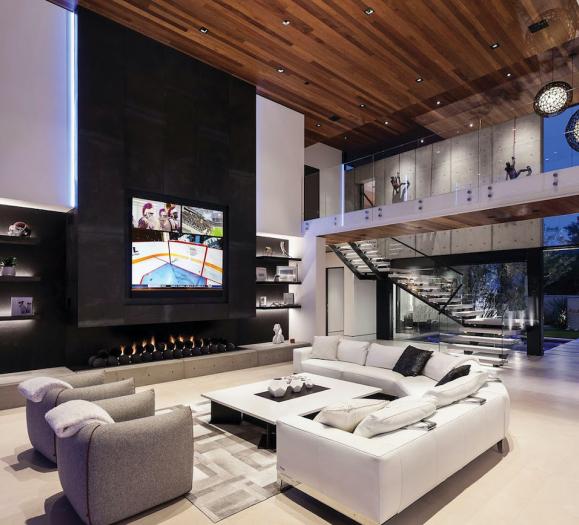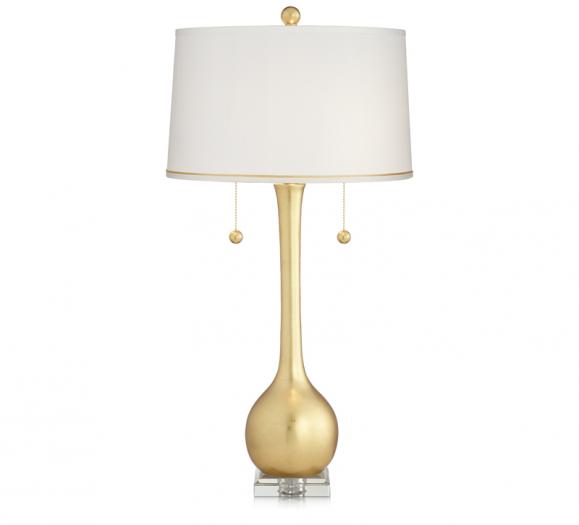Tip 1: Design and conquer
Rooms with tall ceilings can be a gift…and sometimes they can be a pain in the butt. How do you make a voluminous room feel inviting? If you install accent lighting — either track, monopoints or recessed — who’s going to be the brave person that gets up on that tall, tall ladder to change bulbs and adjust the lights? These are the issues to think about.
Tip 2: Oh the humanity!
People can be intimidated by a room with high ceiling lighting. They feel insignificant in the space. It’s the same kind of feeling you get when you walk into a house of worship with tall or vaulted ceilings. You are humbled. This is not the way that you want to make your family and guests feel in your home. It’s much better for people to be subtly drawn into a space, pulled in by what feels like the glow of a crackling fire. This comes from the addition of ambient light. This is indirect lighting that’s bounced off the ceiling and then back into the room.
You can hide the lighting for tall ceilings using crown molding, an architectural cantilever or box beams. This soft fill light helps physically and emotionally warm up the space. But ambient lighting by itself is not enough. It creates what is referred to as the “cloudy day effect,” where everything in the room has the same visual value. You need to add the other three elements of good lighting design: decorative, accent and task lighting.
Depending on the size of the room, hanging one, two or three pendant fixtures helps create a secondary ceiling line, which instills a more human scale into the space. If these luminaires have translucent elements, they can be both decorative and ambient light sources at the same time. Reading lights would fall into the task lighting category. Having little pools of illumination in the seating areas helps draw people into the space and enhance a people-centric vibe.
Tip 3: Up light and out of sight
My main tenet of successful lighting design is the addition of ambient light, even when lighting for tall ceilings. It softens the shadows on people’s faces and helps create an inviting environment that welcomes them into the room. As I mentioned before, there are architectural solutions and faux-architectural solutions to this challenge. In more traditional homes you can install a crown molding that runs the perimeter of the room with indirect light concealed behind. For more modern homes, it can be a shelf-like cantilever that hides the linear light source. Using a linear LED product provides you with a long life and low energy consumption. You can choose your color temperature to match incandescent light at full brightness (2700K) or dimmed incandescent light (2400K). You can also choose an RGBW LED source that gives you a full range of colors, including realistic gradations of incandescent-feeling illumination. You can also specify an LED that goes from daylight (5000K) down to candlelight (2150K).
Another faux-architectural solution for high ceiling lighting is to install a series of box beams. These are non-loadbearing hollow beams that also act as decorative elements. They should be 2 feet to 6 feet down from the ceiling depending on the height of the room. Indirect lighting can then be installed on top of these beams to provide the very desirable fill light. The same beams could also hold recessed adjustable fixtures that would be installed into the bottom side of the beam, making them more accessible for relamping and adjusting.
A quick and non-architectural solution would be to add torchiere lamps as the source of ambient light. Select a style that has an opaque or semi-translucent shade. You don’t want to draw attention to the light source. You can also use portable uplights, hidden behind tall potted plants, to cast a shadow pattern up along the ceiling. Using any one of these options is a step in the right direction to create a room that says, “Hey, come on in. Sit down and take a load off.”







